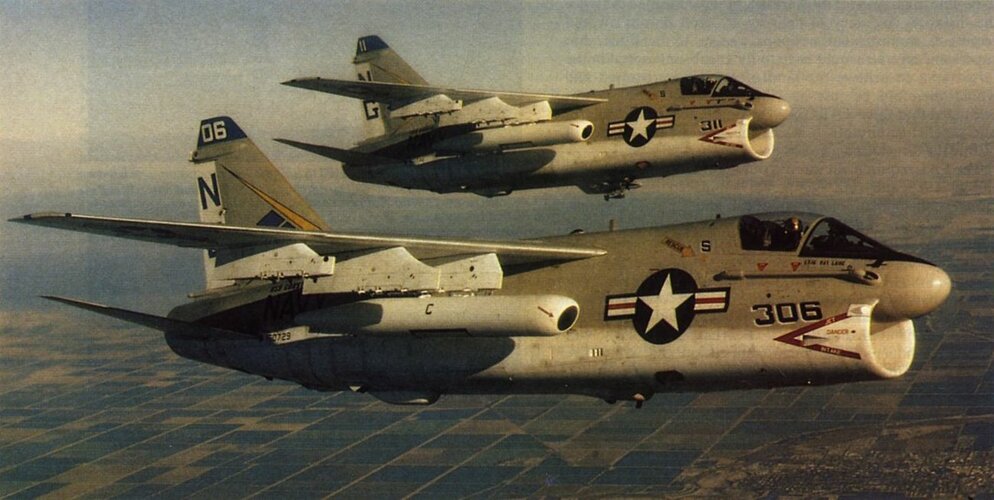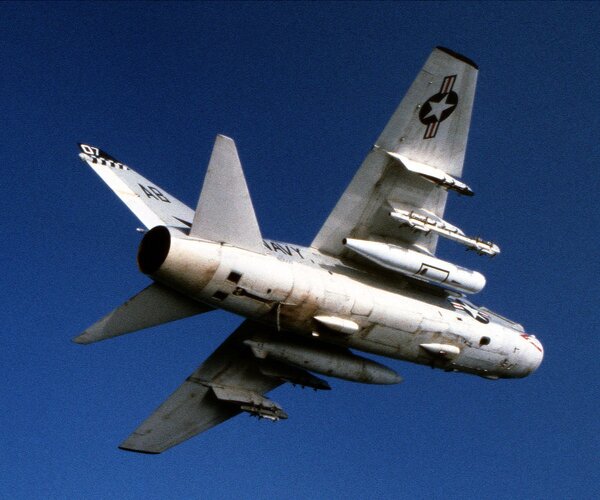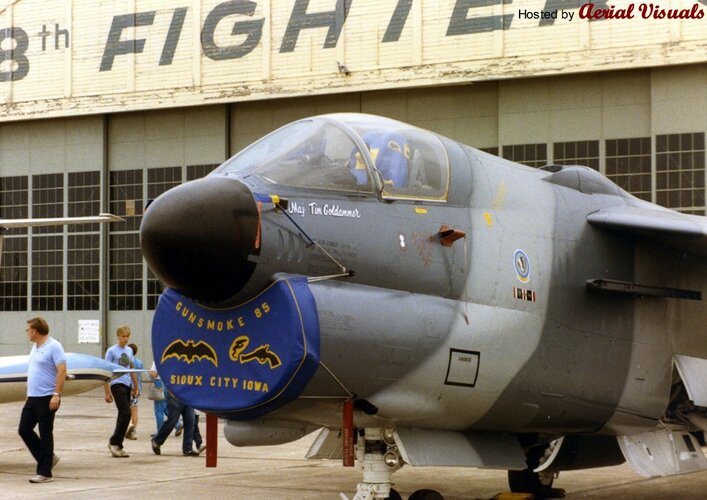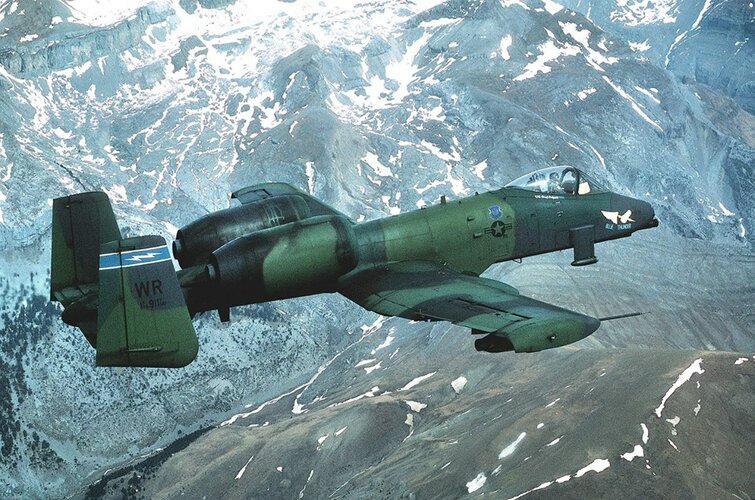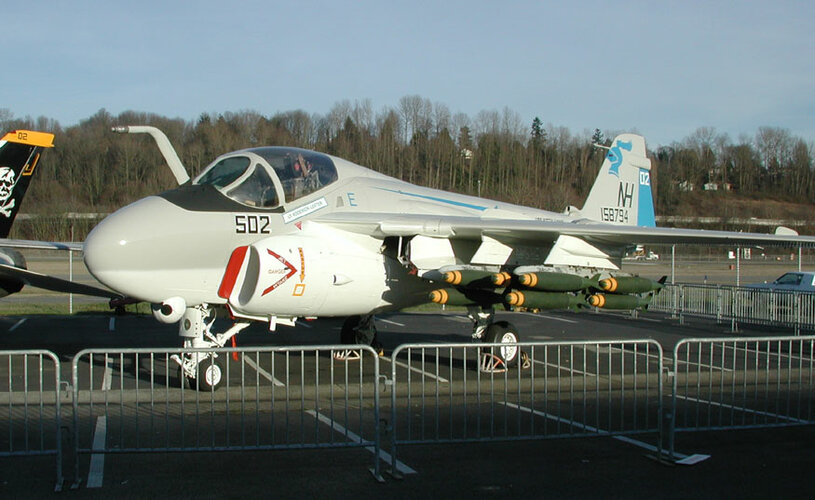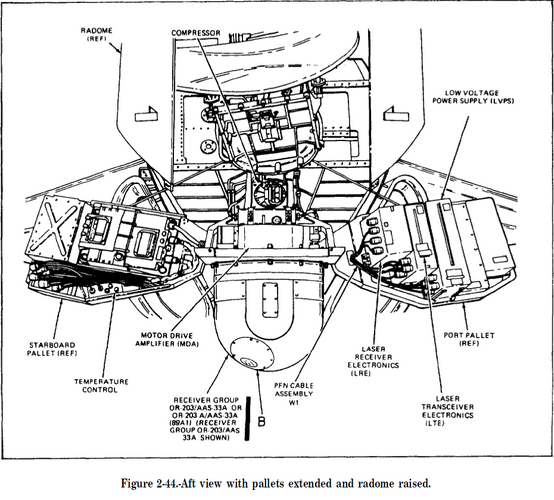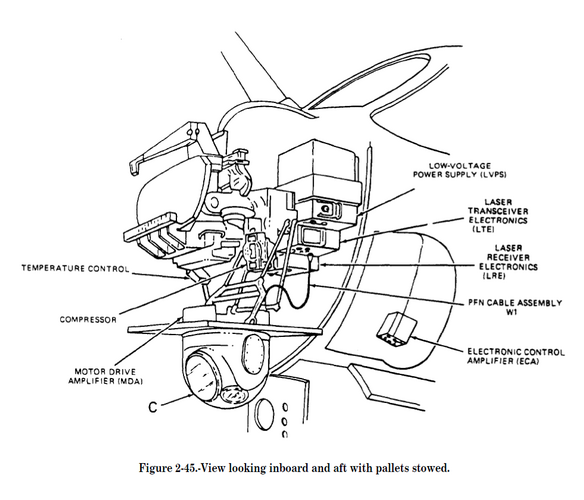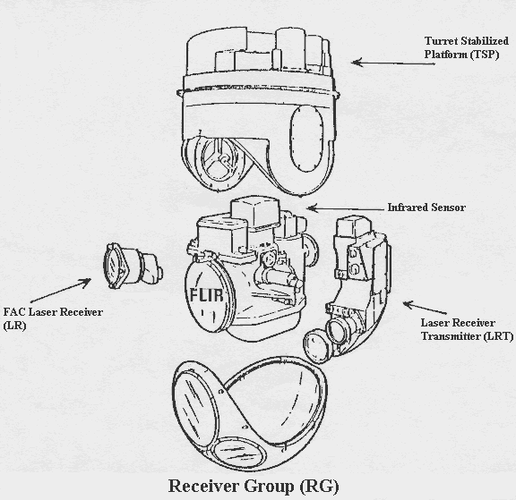That's the point, yes.
The A-10 is not a very survivable aircraft for a war with as much AA as this one. It wasn't a very survivable aircraft fourty years ago. Things have not gotten better.
It's good for moving dirt against dirt farmers.
The Sniper ATP-XR is able to spot targets at ranges the A-10 weapons system cannot kill them.
An easy choice to help fix this would be expediting AGM-179 integration (three shots per station, 12 on the A-10, same drag as an AGM-65K on a LAU-117) rather than going for a GBU-39 which is not really CAS compatible (too slow to target) and requires enormous altitude for useful glide range which the A-10 simply isn't good at.
A more effective solution would be Anduril's Barracuda or Northrop's Jackal which is getting on towards SPEAR-3 ranges of 100-140km.
The Ukrainians are getting their ears twisted by Russians because they won't fly at night and do not have a supporting network of low RCS drones with long range sensors and secure datalinks to provide picture. The Sniper will spot targets at 40nm and engage at 25nm. It has a very powerful, diode pumped, laser and third generation FPA for exactly that reason. In daylight, this is augmented by a pretty decent DTV sensor and some 'sillouhette marker' detection algorithms.
The problem is that it's a very narrow look and we don't have a WAS/MTI capacity _on the jet_ (ASQ-236) to make things better with a high standoff targeter (3-5,000ft) passing LINK-16 data to a low forward shooter (100-200ft) to cue the LDP. The A-10 can do this lolo mission, with ease, because it's slow and heavy controlled with a decent ride zone in the middle of the stick throw that allows for some precision control follow (they were flying it below the trees in the JAWS exercises, back in 76 or so. Scared the hydraulics out of the period Snake pilots). It could do it even better with a more decent autopilot and some PUP'd engines.
Right now, what we need to be aware of is that BRICS is an economic as much as military counter to the state of affairs that is the 'rules based order' and as such it is undermining, quite effectively, the USD. Which means we can no longer count on laying off massive debt as deficit spending via 'joint conference continuing resolutions' which avoid the reality of a budget such as everyone else uses, because BRICS users are simply no longer going through SWIFT portals but rather using alternate electronic 'wormholes' in which money is transferred as X currency to Y bank and then shows up in Z location as the agreed home-state currency value.
If you cannot control exchange ratios in a system you are completely excluded from, you cannot overvalue your overeased currency and with the BRICS users/applicants now making up more of the G20 than the G7 in terms of GDP/NPP, they can begin to push us out of key areas like rare earths, energy and food at an ever increasing pace.
We are in the position we once put the Russians, coming out of the Soviet era in that America simply cannot afford fleets of NGADs and does not have the stones to tell the fighter pilots to 'learn to code' in a massive flip to no-training UCAVs.
That leaves us, again like the Russians, with legacy fleet upgrades which add new tech to old. Like SVP-24, BARS and SOLT-25 putting integrated 4D spatial resolution bombing systems and new thermal optics into Su-25SM3. When combined with the Kh-38, this allows old-school Grachs to be quite effective in a Ukrainian environment, provided they know where the target is from Other Means.
They don't have quite the NCW drone networking and micro munitions which we do (though they are getting there with the I305 LMUR which is better than any Hellfire in terms of targeting flexibility and LOAL self homing...) but they have certainly turned make-do into make-better in ways that are surprising in both their ability to renew large chunks of the USSR air inventory at low cost for a high attrition war. And the ability to reach down, grab hard, and take the billy big balls step on things like ATC/ATA via 'AI' recognitive homing systems. Removing MITL as trigger control on the shooter unless absolutely necessary.
Retaining/ugrading the A-10 offers us a similar capability, especially if we insist on juggling three MRCs at once on a pauper's budget.
The only question is whether things like generator power, display compatibility (HRDS thankfully) and sensor mask angles as well as single-seat doctrinal flexibility (sensor operator and pilot, non-VLO) allows us to make the jet capable of sufficient operational autonomy to handle the likes of a Bandit Boat War, similar to Prime Chance, which the fast movers are not fit for purpose (too fast, too little persistence) or too busy, elsewhere, to undertake.
Our _obsession_ with 'Joint Fires' doctrine as a way to buy everyone into the latest big-budget ante program on a shoestring of servicing and inventory budgeting (no more 25,000 Maverick buys...) has led to some serious shortages in both munition stockpile depth and mission platform autonomy for lower tier threats. This is crippling to our multi-domain ability to respond, rapidly, with small task forces.
We can do better but we need to get off our high horse on CCA-not-NGAD when pilots would as soon make it 'NGAD and no CCA' and we need to accept regional service responsibilities which include deep X wide inventory supply chains of capable standoff shooters that avoid the LOS threat while delivering overwhelming numbers of small powered munition alternatives to the current, &*$#!! Stealth-Only, emphasis on J-series glide bombs.

